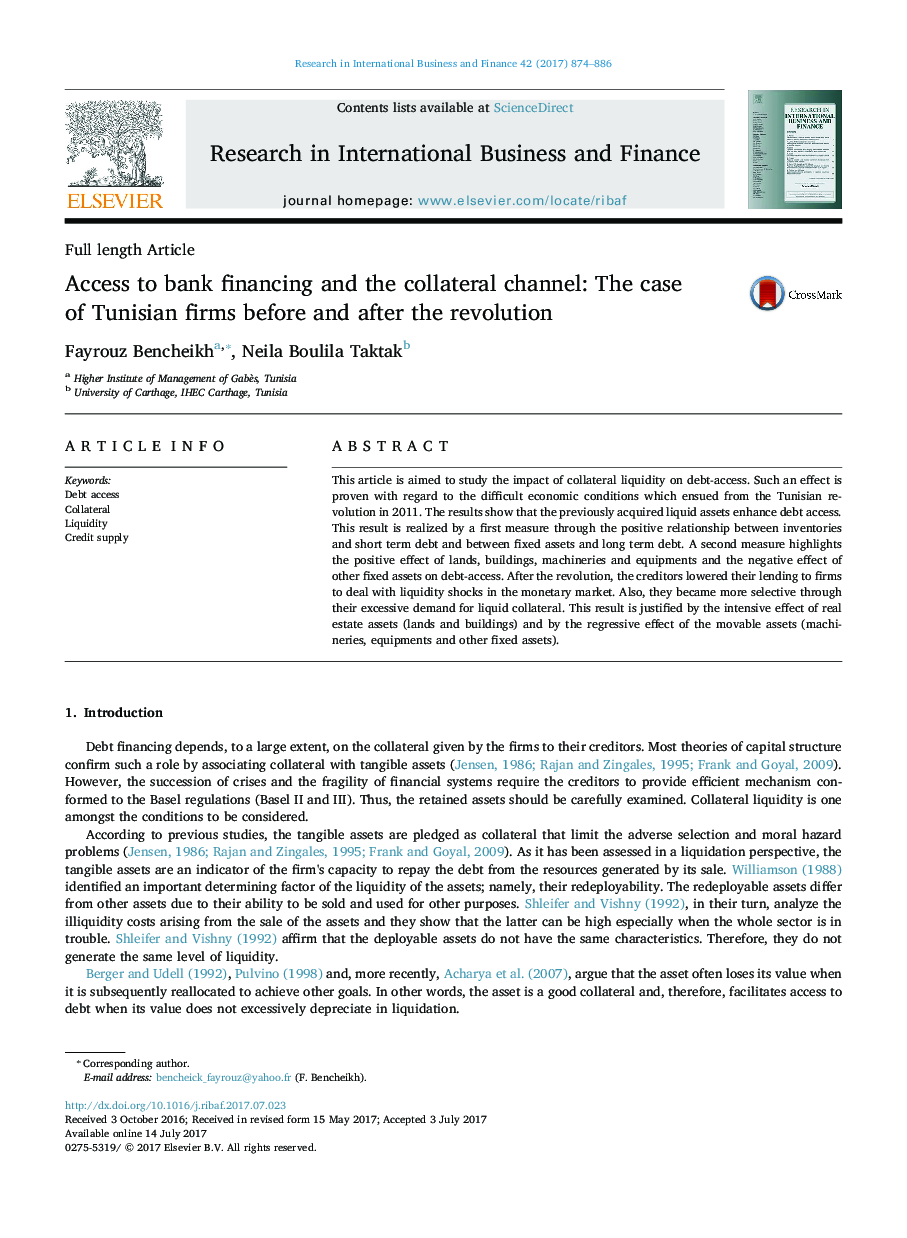| کد مقاله | کد نشریه | سال انتشار | مقاله انگلیسی | نسخه تمام متن |
|---|---|---|---|---|
| 5107311 | 1481792 | 2017 | 13 صفحه PDF | دانلود رایگان |

This article is aimed to study the impact of collateral liquidity on debt-access. Such an effect is proven with regard to the difficult economic conditions which ensued from the Tunisian revolution in 2011. The results show that the previously acquired liquid assets enhance debt access. This result is realized by a first measure through the positive relationship between inventories and short term debt and between fixed assets and long term debt. A second measure highlights the positive effect of lands, buildings, machineries and equipments and the negative effect of other fixed assets on debt-access. After the revolution, the creditors lowered their lending to firms to deal with liquidity shocks in the monetary market. Also, they became more selective through their excessive demand for liquid collateral. This result is justified by the intensive effect of real estate assets (lands and buildings) and by the regressive effect of the movable assets (machineries, equipments and other fixed assets).
117
Journal: Research in International Business and Finance - Volume 42, December 2017, Pages 874-886